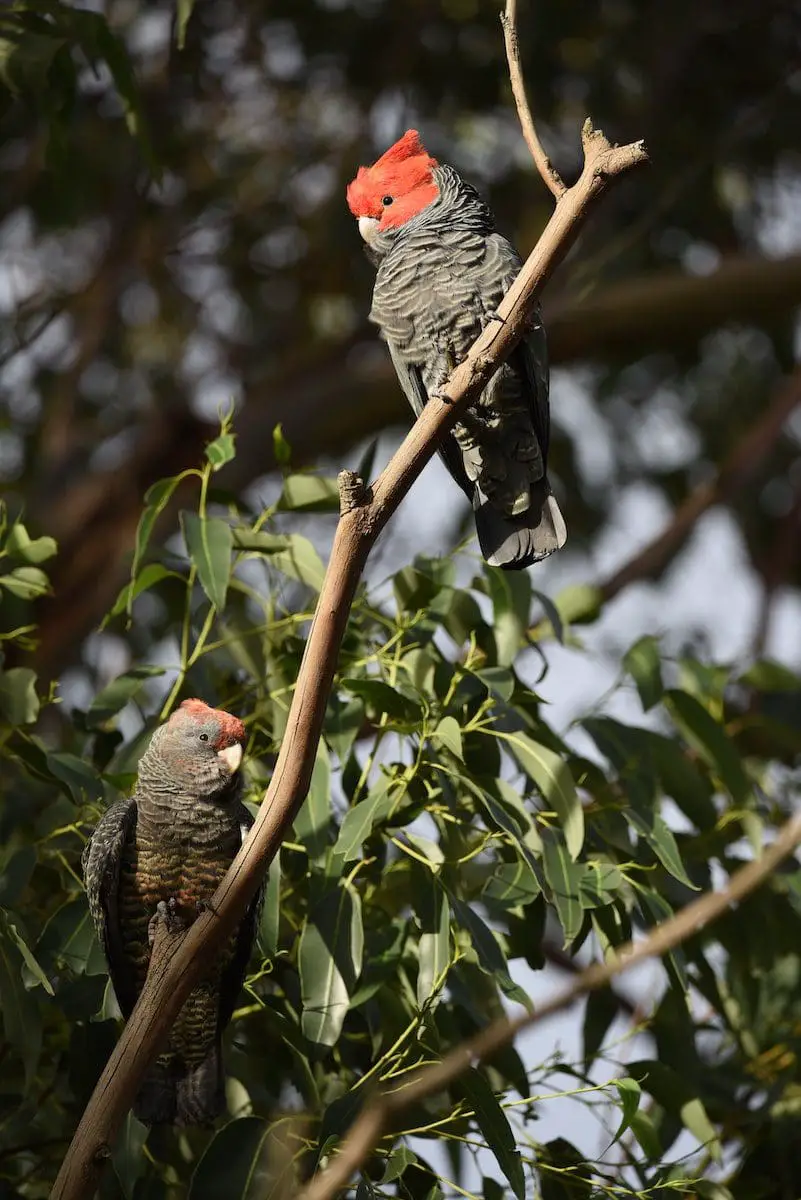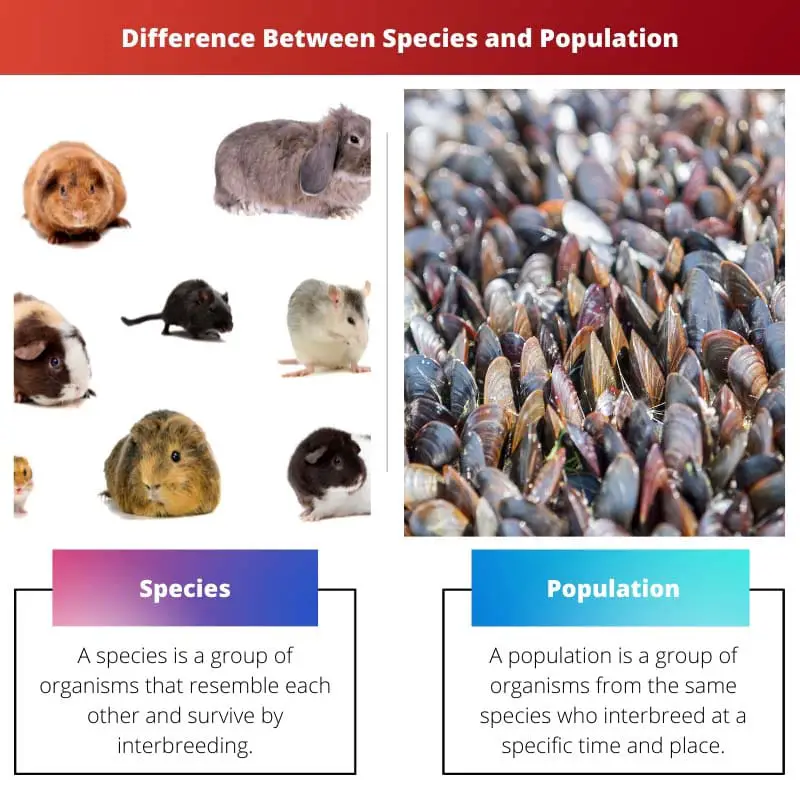An ecosystem is a vast biological system depicting all organisms’ relationships with their environment. These organisms have varying characteristics, eating habits, physical adaptations etc.
Key Takeaways
- Species refer to organisms that can interbreed and produce fertile offspring. In contrast, population refers to a group of individuals of the same species that live in a particular area.
- Species are distinct based on their genetic makeup and physical characteristics, while populations can vary within the same species.
- Species are classified based on characteristics, while populations are studied to understand their dynamics and growth patterns.
Species vs Population
Species can be a group of living beings who have a resemblance with each other. They must have the same DNA. A single individual is the basis of species. The population can be a group of people who live in a specific place. Their culture or traditions can be or cannot be the same. Birth or death can affect the growth of the population.

It comprises a group of the same type of organisms or individuals who can interbreed with each other. The organisms belonging to a species, thereafter, get divided into various genera, families, orders, classes or kingdoms based on their characteristics.
The population is a combination of a whole consisting of organisms belonging to a particular species, their interaction and interbreeding at a specific place and time.
The number of individuals in a population keeps on increasing and decreasing according to environmental, social and physical factors at a certain point in time.
Comparison Table
| Parameters of Comparison | Species | Population |
|---|---|---|
| Definition | A species is a group of organisms that resemble each other and survive by interbreeding. | A population is a group of organisms from the same species that interbreed at a specific time and place. |
| Quantity | It represents a single individual who becomes the basis. | It represents a group of individuals of the same species. |
| Interbreeding | Organisms belonging to two different species cannot interbreed with each other. | Organisms from two populations of the same species can interbreed. |
| Charcteristics | A species must always have similar morphology or DNA. | A population may or may not have the same cultures, traditions etc. |
| Basis | Felis catus and Equus caballus are two species of animals. | Felis catus can have several populations of it all around the world. |
What is Species?
Species is the basic level of classification of organisms in the ecosystem. When a group of organisms, similar in their morphology, DNA, environmental behaviour, or adaptation, mate with each other and produce offspring, they are referred to as a species.
Every organism has a biological or scientific name given to it. For example, Panthera tigris is the biological name given to the tiger, where Panthera is the genus, and Tigris is the species.
The term species originated first in 1859 when Charles Darwin described natural selection. There are various criteria under which a species is formed.
There have been several cases and situations that tend to make this concept debatable. One of the aspects is the existence of microspecies. It makes it difficult to determine the gene flow within a population of a particular species.

What is Population?
The population is a term associated with species. It is referred to as a group of organisms of the same species who interbreed with each other in a particular place at a specific interval of time.
Birth, Death and Dispersal are the most common factors affecting population growth. When the environmental conditions become favourable, population growth increases or decreases otherwise.
The ability of a population to hype up its number at the maximum possible rate is known as the biotic potential of the population. Climate, food and water availability, habitat and many other environmental factors are essential for a population’s survival.
Organisms of a population sustain their livelihood by establishing a symbiotic relationship with others. This further results in competition when two or more populations reside under similar environmental conditions in a particular place.

Main Differences Between Species and Population
- A species has organisms similar, while a population has organisms of the same species.
- Species represents a single individual, whereas population represents a group of individuals of the same species. Interbreeding between two populations of the same species is possible but not between two different species.
- A species must have similar morphology or DNA, but a population may or may not have similar values, cultures etc.




